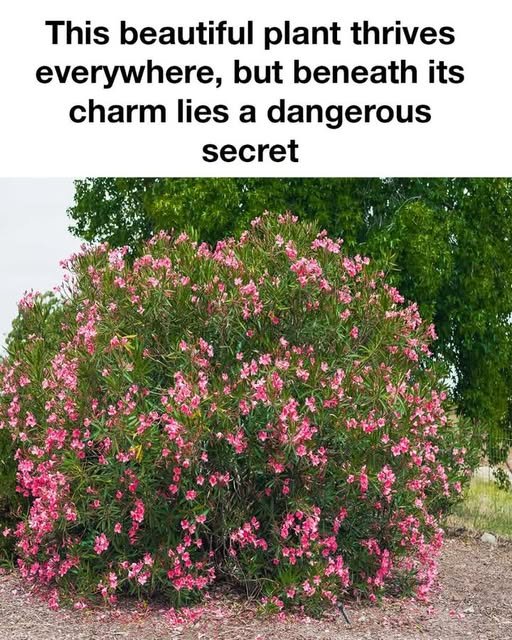Nerium oleander, commonly known as oleander, is a plant that captivates with its vibrant flowers and evergreen foliage. Despite its beauty, this plant harbors a dangerous secret: it is highly toxic. Oleander is often found in gardens and landscapes around the world, admired for its ability to thrive in a variety of climates and conditions. However, its toxicity poses significant risks to humans and animals, making it a plant that requires careful consideration and handling.
The Origins and Global Spread of Nerium Oleander
Native to the Mediterranean region and parts of Asia, Nerium oleander has been cultivated for centuries. Its resilience and adaptability have allowed it to spread across the globe, becoming a popular ornamental plant in regions with warm climates. Today, oleander can be found in countries such as the United States, Australia, and South Africa, where it is often used in public landscaping due to its drought resistance and low maintenance requirements.
The Alluring Beauty of Nerium Oleander
Oleander’s appeal lies in its lush, green leaves and clusters of flowers that bloom in shades of pink, red, white, and yellow. The plant’s ability to flower throughout the year in suitable climates adds to its ornamental value. Its dense foliage provides an attractive backdrop for its vibrant blooms, making it a favorite among gardeners looking to add color and structure to their landscapes.
Understanding the Toxicity of Nerium Oleander
Despite its aesthetic appeal, oleander is one of the most poisonous plants known. All parts of the plant, including the leaves, flowers, and stems, contain toxic compounds that can be lethal if ingested. The plant’s toxicity has been known since ancient times, and it has been used historically in various cultures for its poisonous properties.
The Chemical Compounds Behind the Danger
The primary toxic compounds in oleander are cardiac glycosides, specifically oleandrin and neriine. These compounds affect the heart by disrupting the normal function of cardiac cells, leading to potentially fatal heart rhythm disturbances. Even small amounts of oleander can cause severe symptoms, making it a plant that must be handled with caution.
Symptoms and Risks of Oleander Poisoning
Ingesting any part of the oleander plant can lead to symptoms such as nausea, vomiting, abdominal pain, diarrhea, and irregular heartbeats. In severe cases, oleander poisoning can result in coma or death. The plant’s toxicity is not limited to ingestion; even contact with the sap can cause skin irritation or allergic reactions in sensitive individuals.
Precautions and Safety Measures for Handling Oleander
To safely enjoy oleander in your garden, it is crucial to take precautions. Always wear gloves when handling the plant, and wash your hands thoroughly afterward. Educate children and pets about the dangers of oleander, and ensure they do not ingest any part of the plant. If you suspect oleander poisoning, seek medical attention immediately.
Alternatives to Planting Nerium Oleander
For those who love the look of oleander but are concerned about its toxicity, there are safer alternatives. Plants such as hibiscus, bougainvillea, and plumeria offer similar vibrant blooms without the associated risks. These alternatives can provide the same aesthetic appeal while ensuring a safer environment for children and pets.
Conclusion: Balancing Beauty and Safety in Your Garden
Nerium oleander is undeniably beautiful, but its toxicity cannot be overlooked. By understanding the risks and taking appropriate precautions, gardeners can enjoy oleander’s beauty while minimizing potential dangers. For those who prefer a safer option, numerous alternatives can provide similar visual appeal without compromising safety. Ultimately, the key is to balance beauty and safety in your garden, ensuring a harmonious and secure outdoor space.



